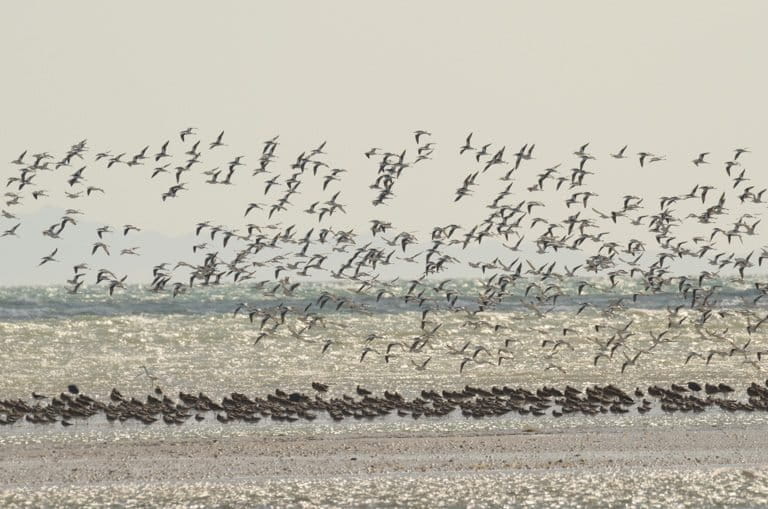- A new study demonstrates that how a country is governed is the factor that has the most influence on waterbird populations.
- Governance plays a bigger role than climate change or human population booms.
- The authors suggest that waterbirds, which include ducks, flamingos and pelicans, could serve as indicators to demonstrate the impact that governance has on biodiversity in general.
A country’s citizens aren’t the only ones to benefit from living in a place that’s run well. In a new study, a team of scientists reports that the most important factor that determines the conservation status of waterbird species is how effectively a country is managed.
“Political instability can weaken legal enforcement, and consequently promote unsuitable, often illegal, killing even in protected areas,” Tatsuya Amano, a conservation biologist at Cambridge University in the U.K., said in a statement. “Although the global coverage of protected areas continues to increase, our findings suggest that ineffective governance could undermine the benefits of these biodiversity conservation efforts.”
Amano is the lead author of a paper published Dec. 20 in the journal Nature.

Conservation scientists have long understood that efforts to protect wildlife are harder to get off the ground in poorly run countries. But until now, they didn’t have enough data to zero in on an identifiable trend.
To tackle that problem, Amano and her colleagues tabulated yearly totals of more than 460 waterbird species from nearly 26,000 spots across the globe, looking into how species’ numbers fluctuated between 1990 and 2013.
The team then compared those changes in waterbird abundance with a dataset from the World Bank called the Worldwide Governance Indicators, which measures factors related to how countries are managed, such as corruption levels and the selection process for leaders.
Their analysis showed, for the first time, that if a country is governed well, it was more likely to have higher bird numbers. What’s more, in those places, conservation efforts were more likely to succeed. This factor had a bigger influence on the bird populations studied than climate change or spikes in the number of people in a given country.
In nations with management issues, particularly in parts of Asia, South America and Africa, bird numbers have dipped more than in their better-run counterparts in Europe, though even there, many species appear to be trending downward.

Poor governance has likely led to damaged important wetland or the loss of watery habitats altogether in several spots, the authors write. Lax hunting laws, too, might be helping drag down the numbers of waterbirds, which include ducks, flamingos and pelicans.
The researchers also found that a quickly rising GDP — or gross domestic product, a measure of the value of a country’s economy — was linked to larger drops in bird numbers.
The authors chose waterbirds because of the copious data available on them, collected by groups such as Wetlands International and the National Audubon Society. The wetlands that many of them depend on are also important for humans because they provide services such as clean water, habitat for fish and protection of coastal areas, but they’ve also been negatively impacted by humans more than other ecosystems. As a result, waterbirds serve as indicators of the pressure that mismanaged countries are likely having on other types of wildlife.
“Our study shows that waterbird monitoring can provide useful lessons about what we need to do to halt the loss of biodiversity,” Szabolcs Nagy, an ecologist with Wetlands International and an author of the paper, said in the statement.
CITATION
Amano, T., Székely, T., Sandel, B., Nagy, S., Mundkur, T., Langendoen, T., … Sutherland, W. J. (2017). Successful conservation of global waterbird populations depends on effective governance. Nature. Retrieved from http://dx.doi.org/10.1038/nature25139
Banner image of pelicans by John C. Cannon.
FEEDBACK: Use this form to send a message to the author of this post. If you want to post a public comment, you can do that at the bottom of the page.














